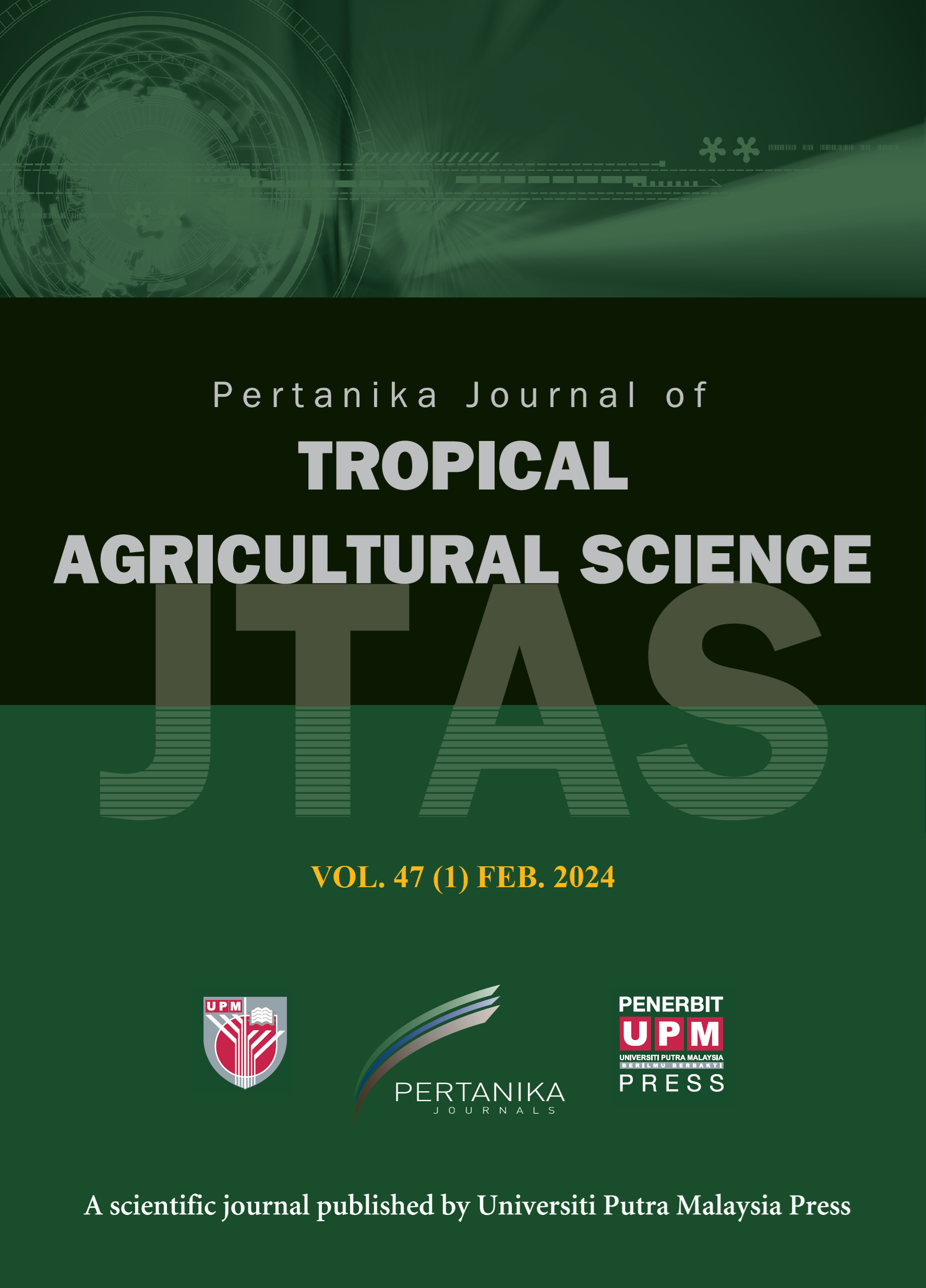PERTANIKA JOURNAL OF TROPICAL AGRICULTURAL SCIENCE
e-ISSN 2231-8542
ISSN 1511-3701
Prevalence, Risk Factors and Transmission of Nervous Necrosis Virus in A Hatchery Producing Hybrid Grouper (Epinephelus lanceolatus × Epinephelus fuscoguttatus) Fry
Atirah Khairiah Ahmad, Mohammad Noor Azmai Amal, Mohd Zamri Saad, Munira Murni, Azila Abdullah, Sufian Mustafa and Nik Haiha Nik Yusof
Pertanika Journal of Tropical Agricultural Science, Volume 42, Issue 1, February 2019
Keywords: Hatchery, prevalence, risk factors, transmission, viral nervous necrosis
Published on: 25 Feb 2019
This study investigates the prevalence, risk factors, and transmission of nervous necrosis virus (NNV) in a hatchery producing hybrid grouper (Epinephelus lanceolatus × Epinephelus fuscoguttatus) fry. The eggs and sperm of giant grouper (GG) and tiger groupers (TG) that were collected for breeding purposes within the 12-month study period were sampled to detect NNV. At the same time, three breeding attempts of different NNV status of broodstocks, which were NNV-positive GG × NNV-positive TG, NNV-positive GG × NNV-negative TG and NNV-negative GG × NNV-negative TG were conducted. The produced hybrid grouper (HG) fry was then sampled at 5, 10, 20, 30, 40, 60, 90, and 120 days post-hatched to detect the presence of NNV. The fresh fish, live feed, and commercial fish pellet that were used to feed the broodstocks or HG fry throughout the study period were also sampled for NNV detection. The water’s physico-chemical parameters during each sampling were determined. The results revealed that the broodstocks had a low prevalence to NNV. However, when at least one of the broodstocks was NNV-positive, all batches of the fry were NNV-positive at high prevalence. There were consistent associations of ammonia and iron with the presence of NNV in both broodstocks and fry. Phylogenetic tree indicates the possible horizontal and vertical transmissions of NNV in the hatchery culture system. Understandings the epidemiology of NNV in a real hatchery condition can provide significant information for control and prevention of the disease.
ISSN 1511-3701
e-ISSN 2231-8542




